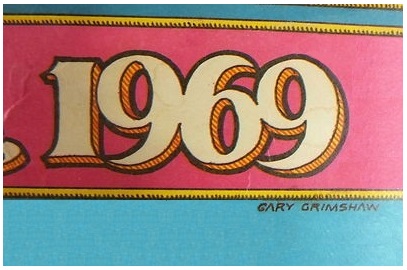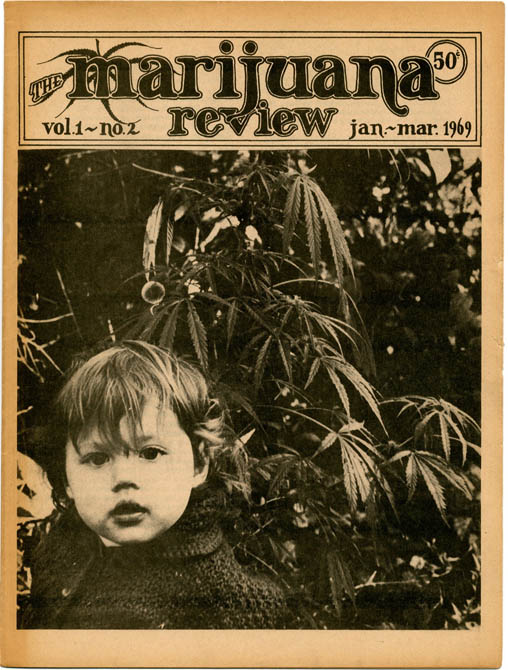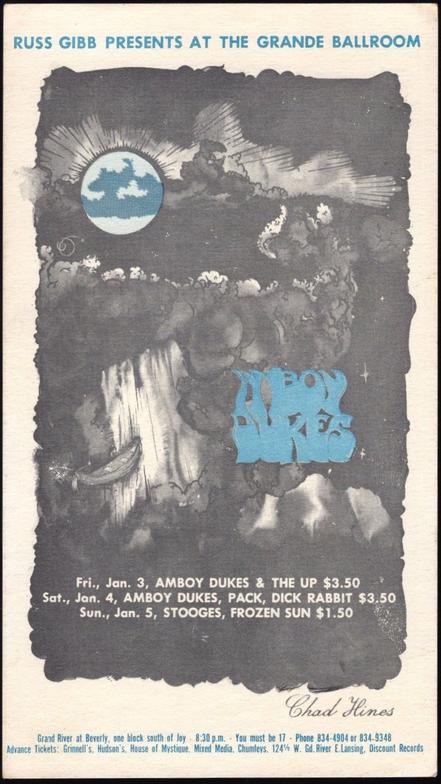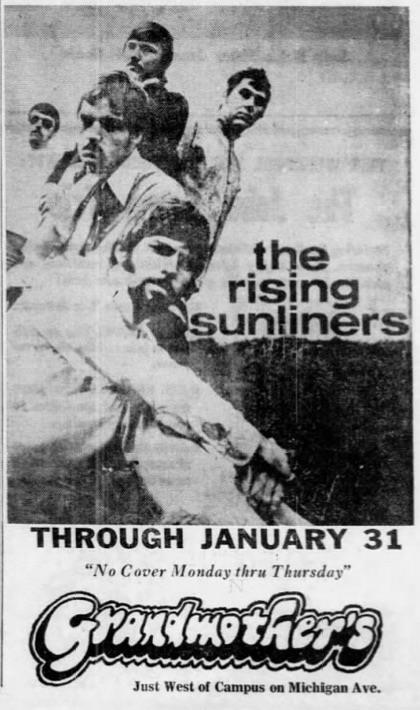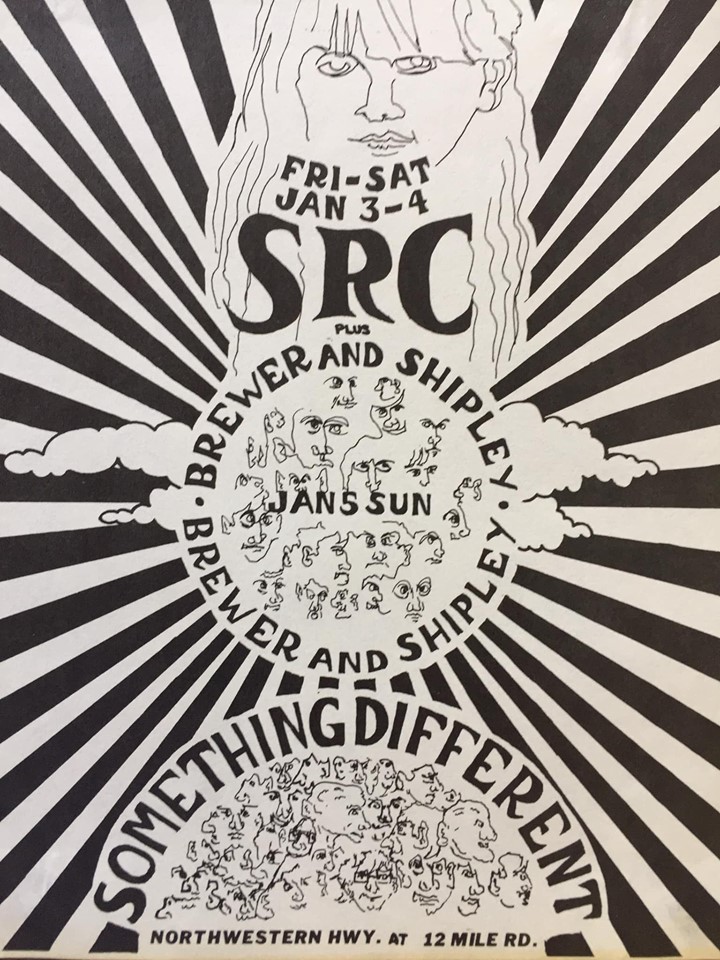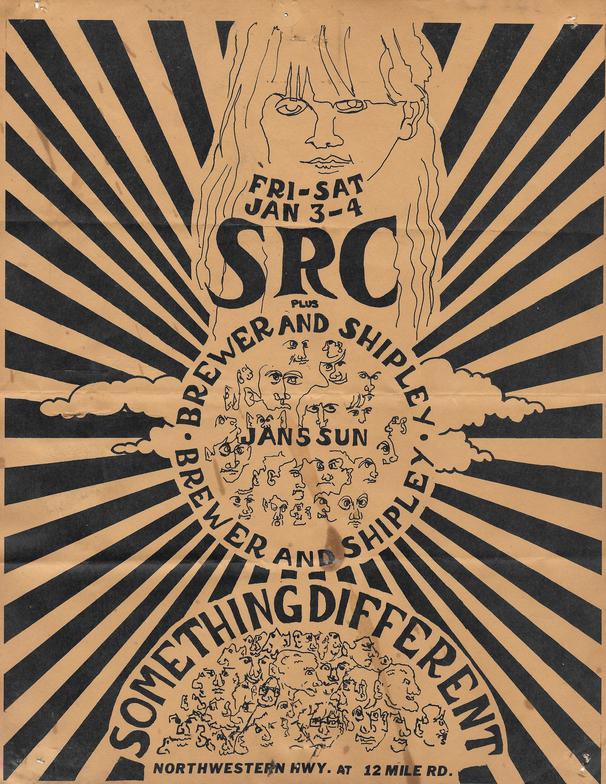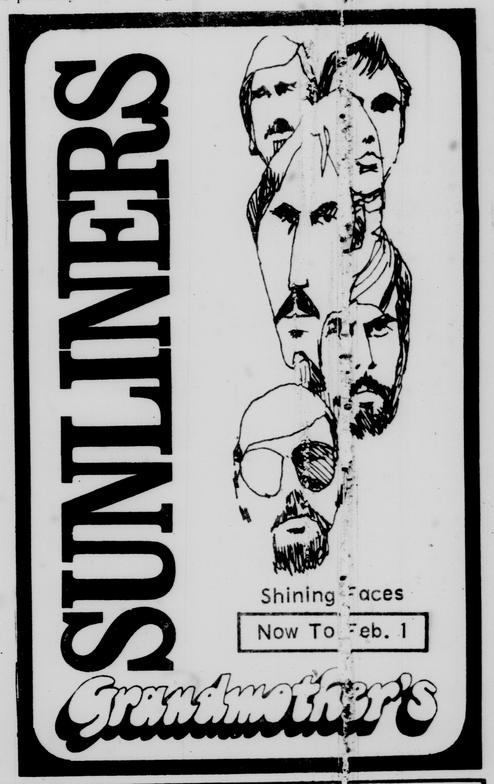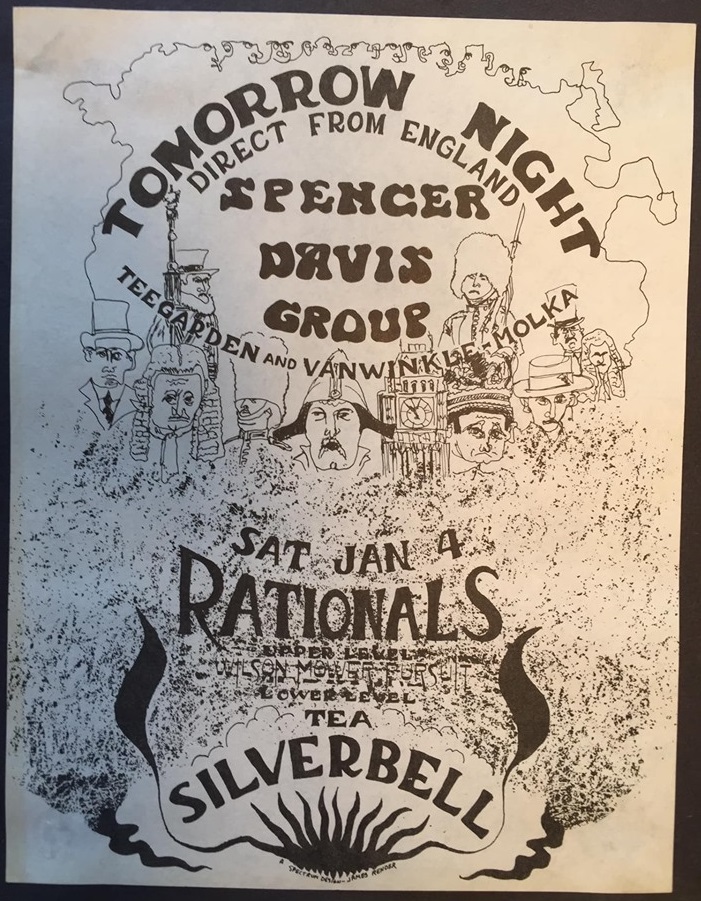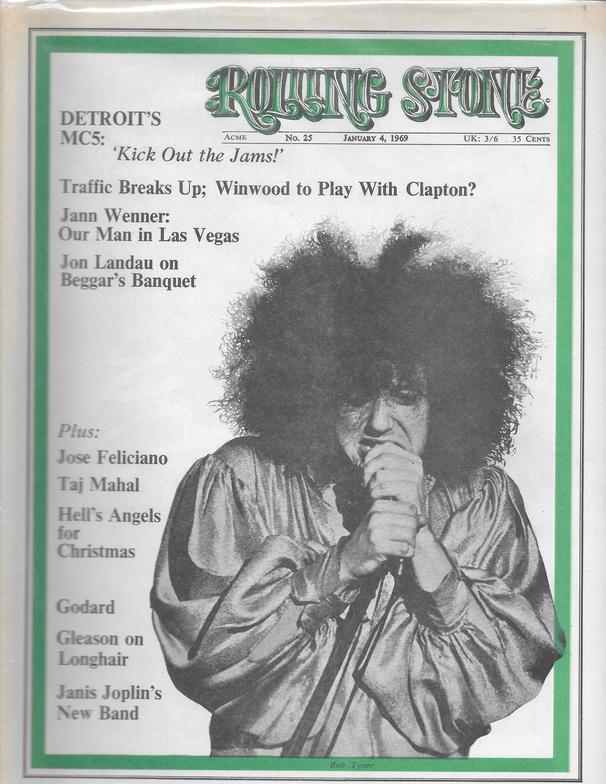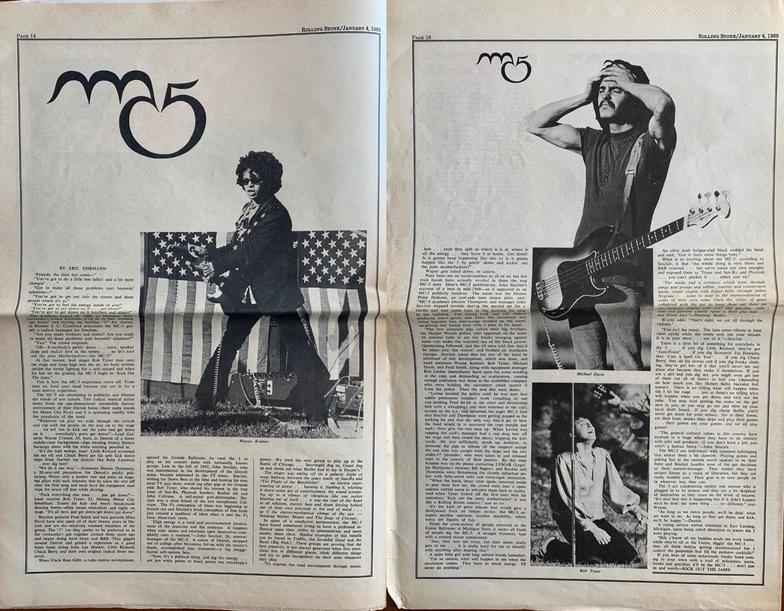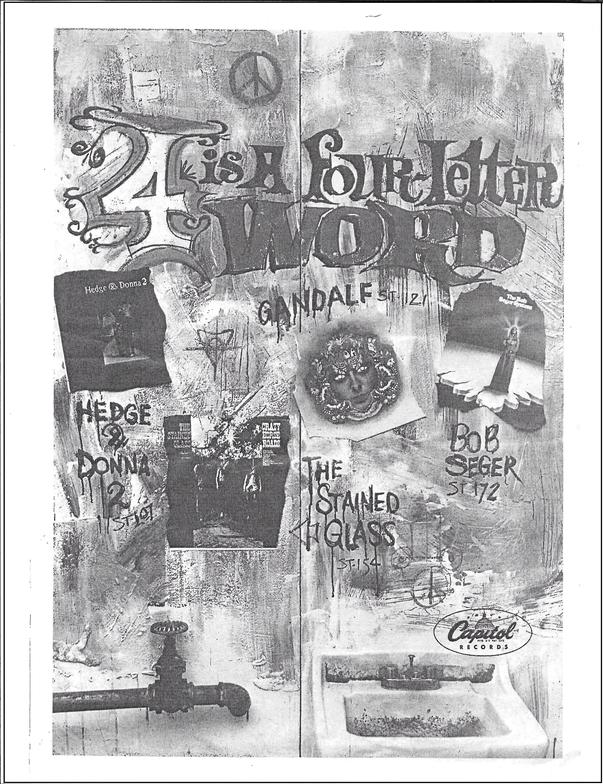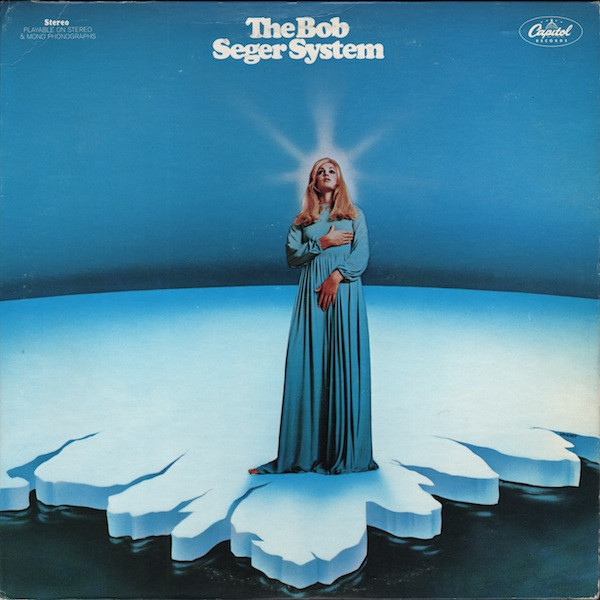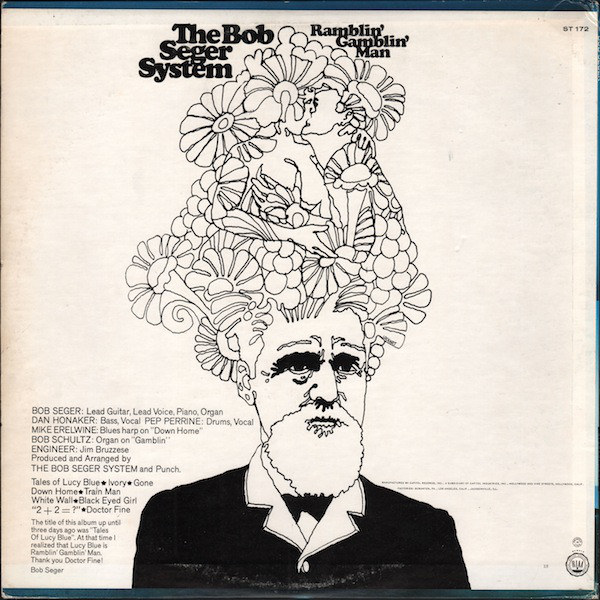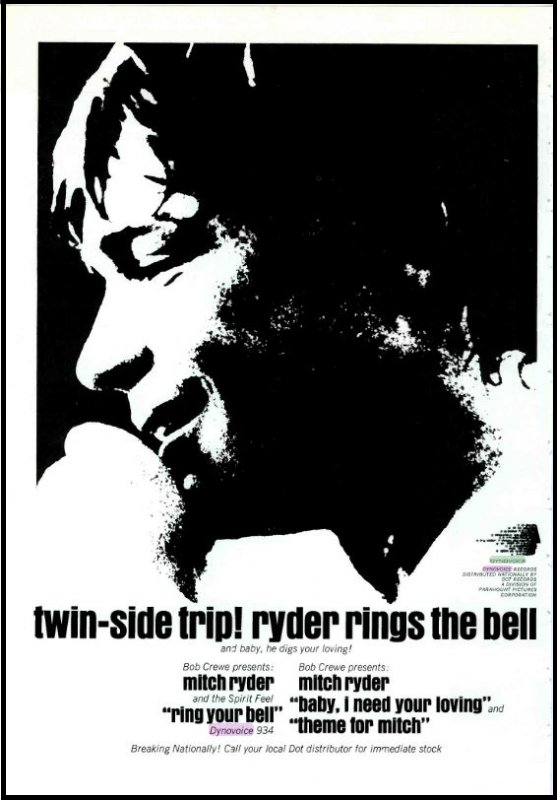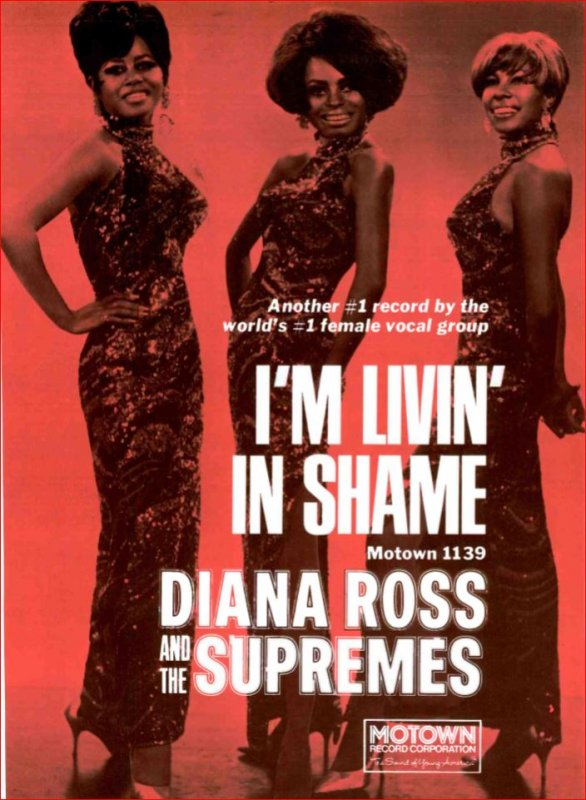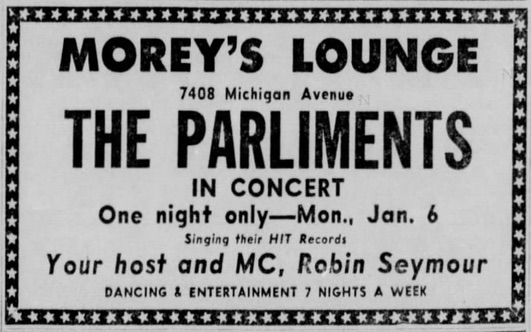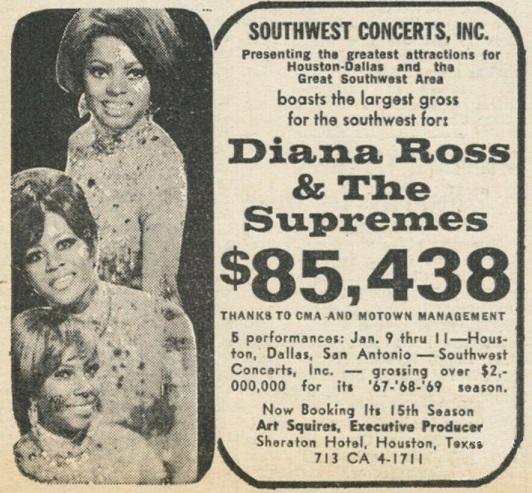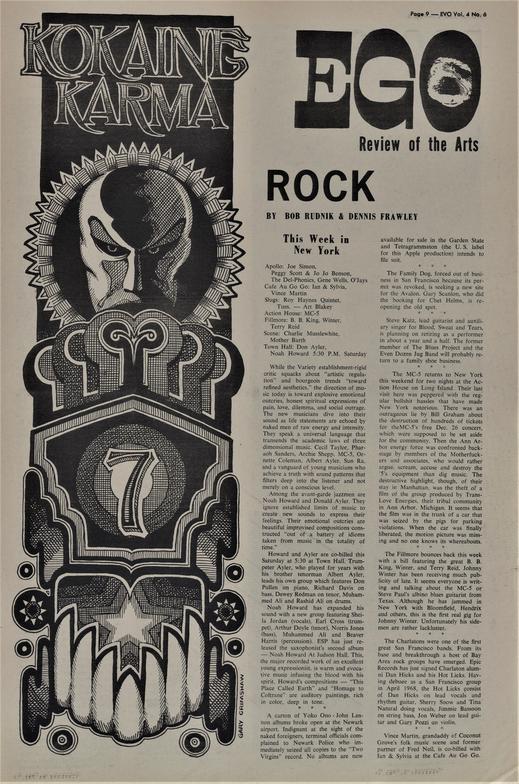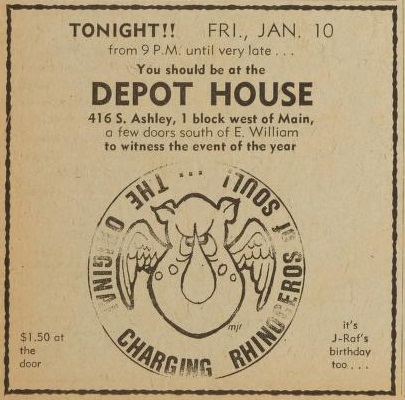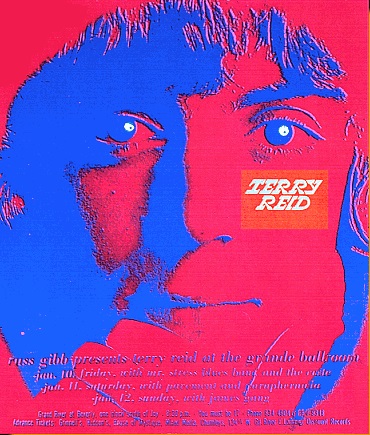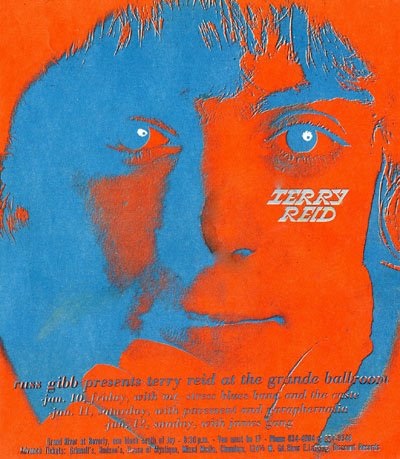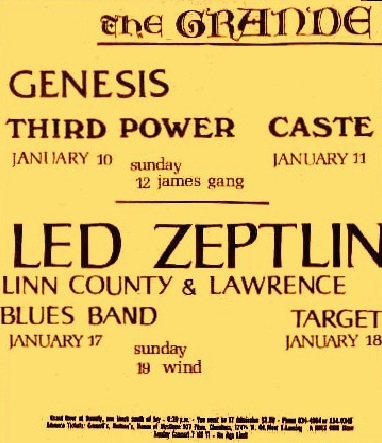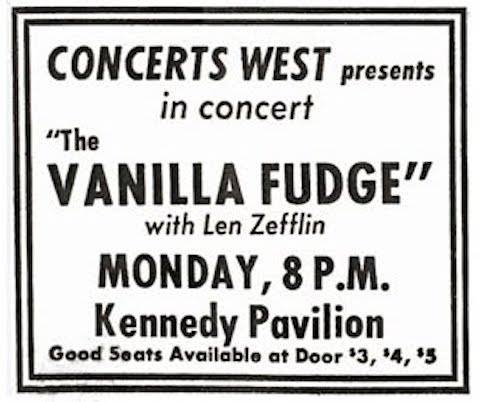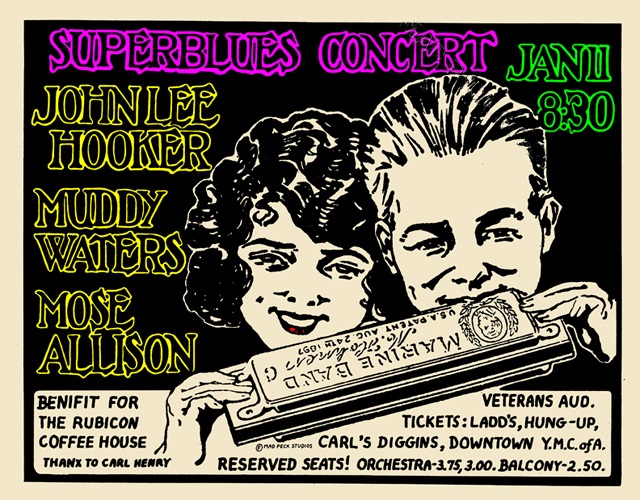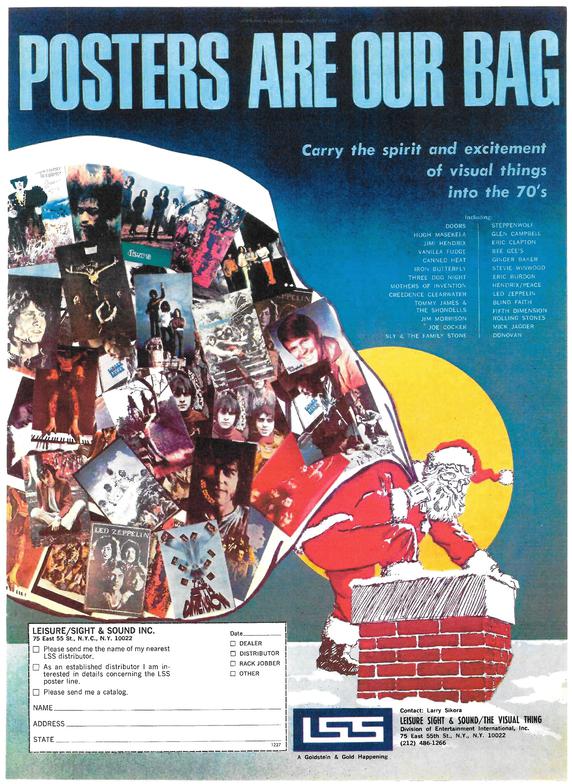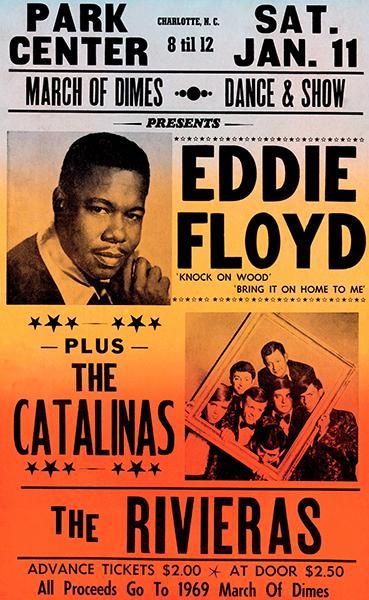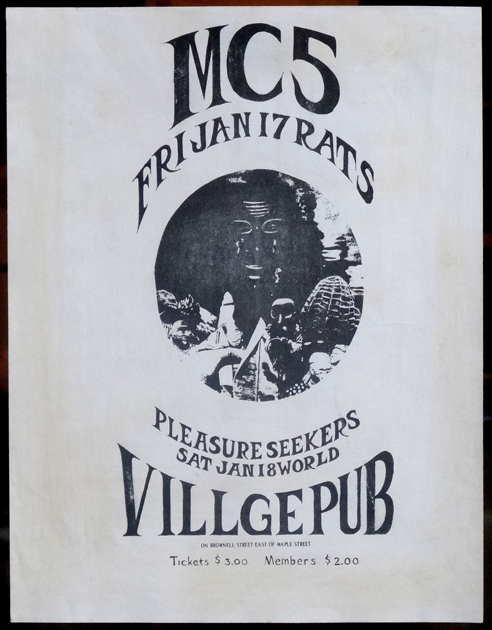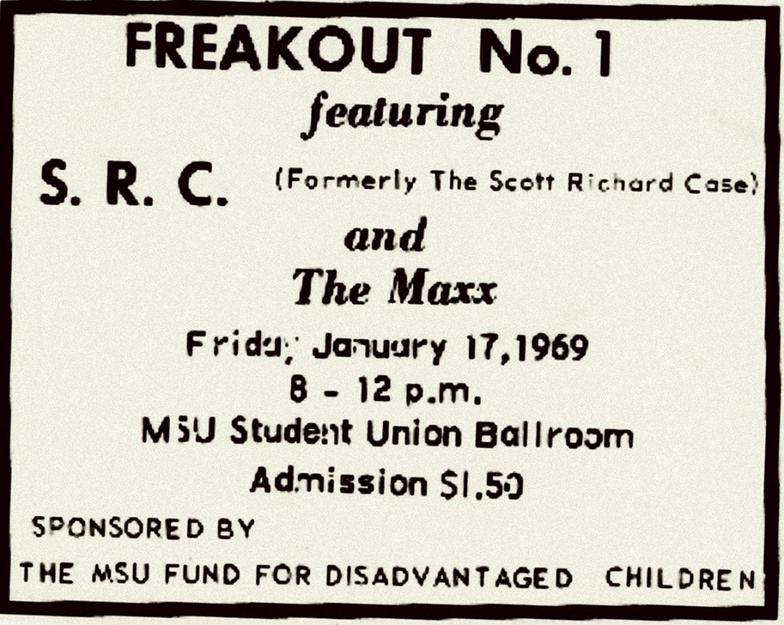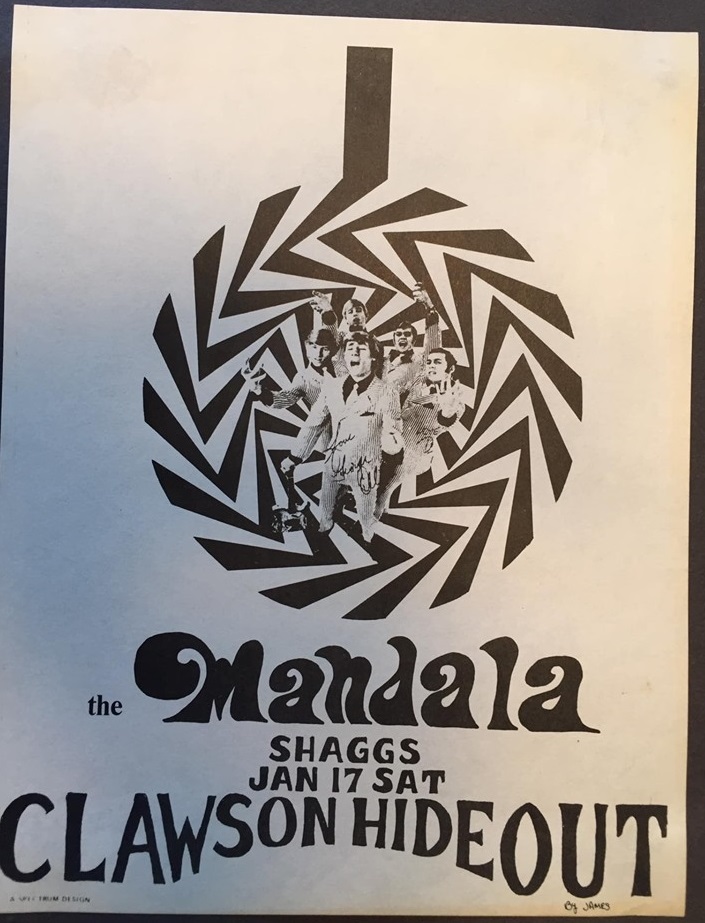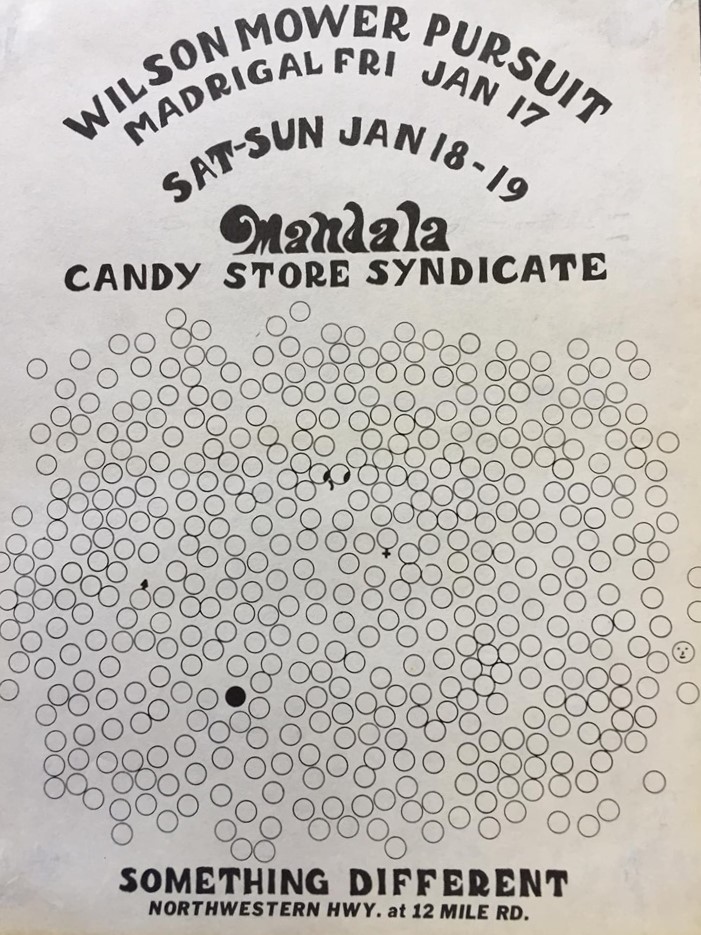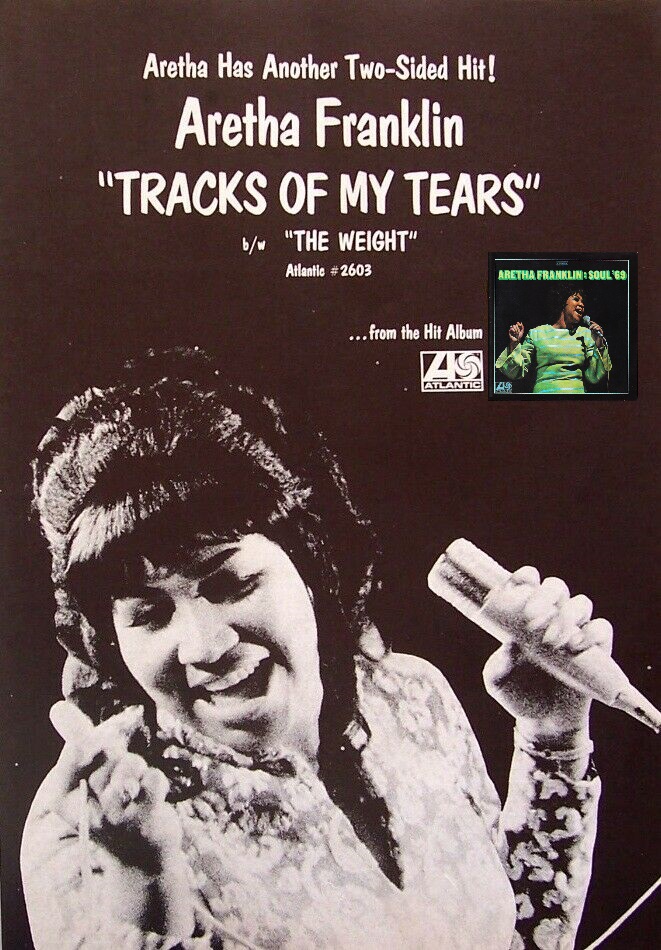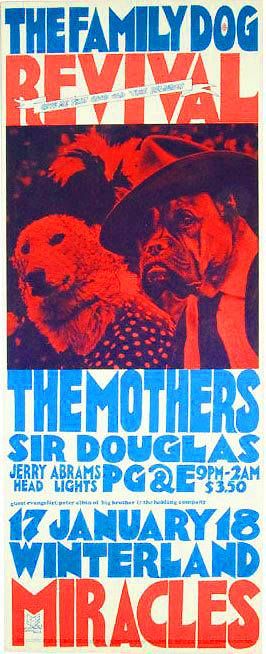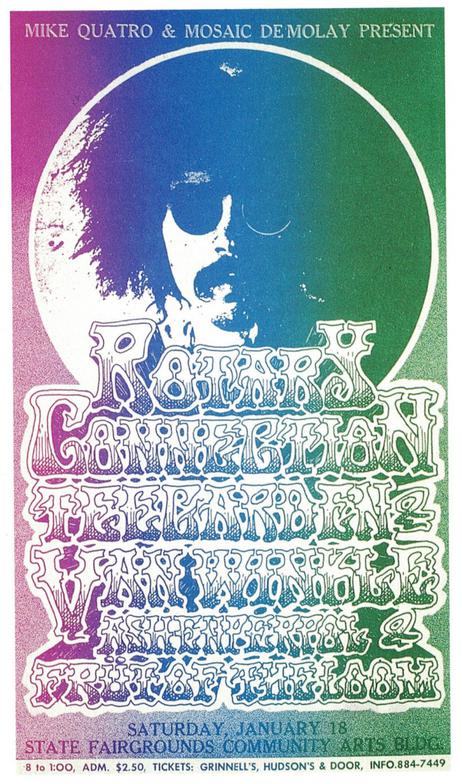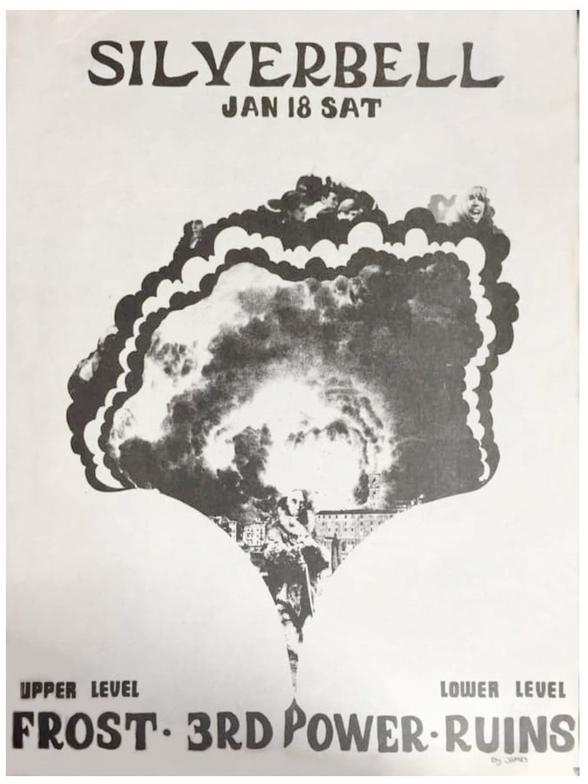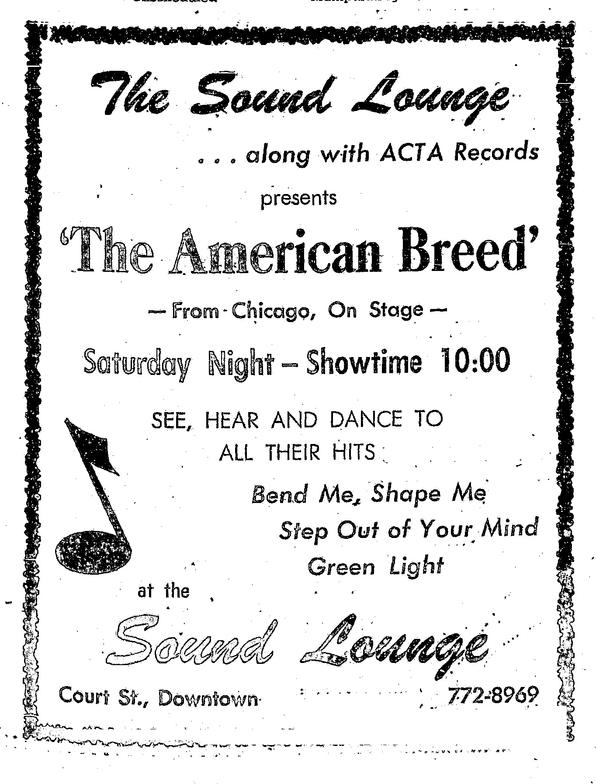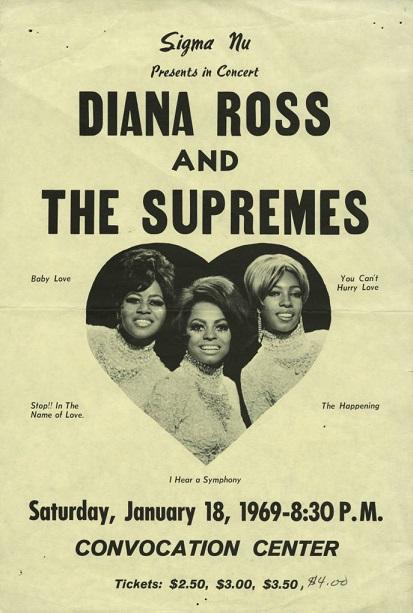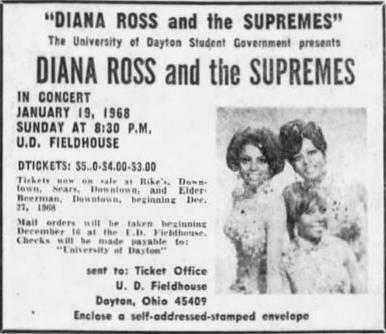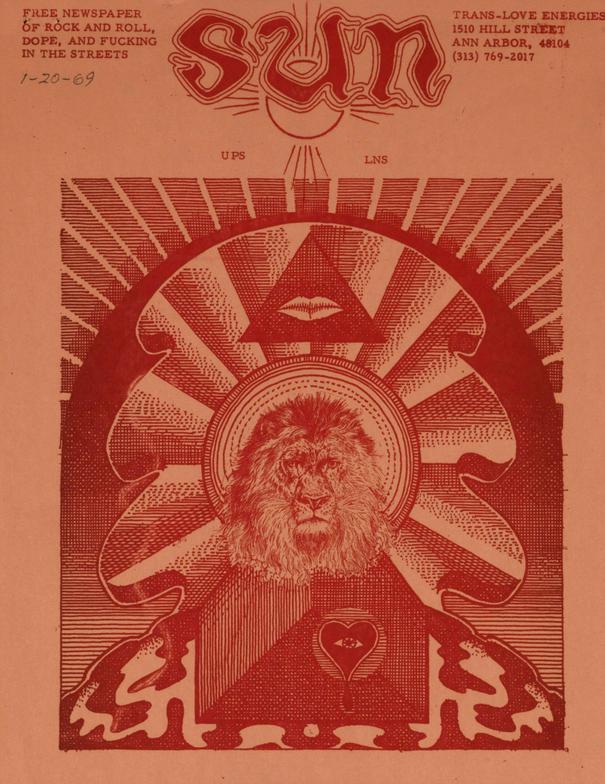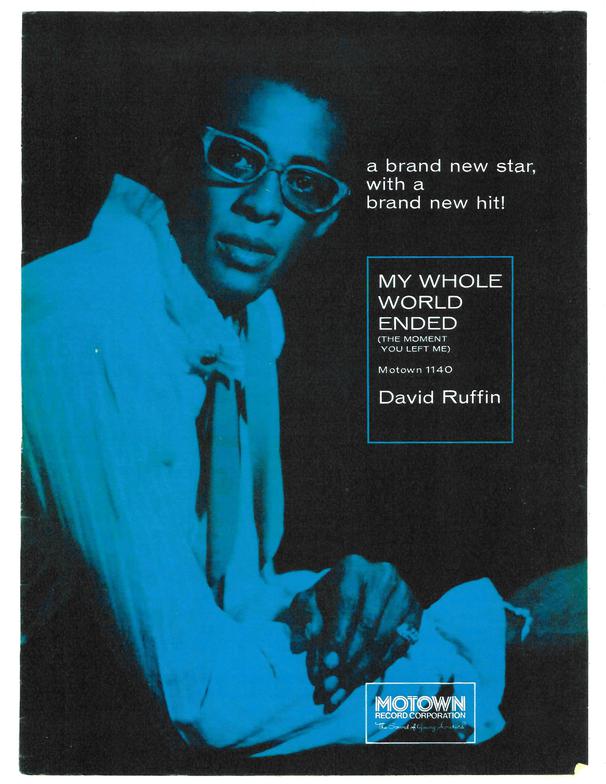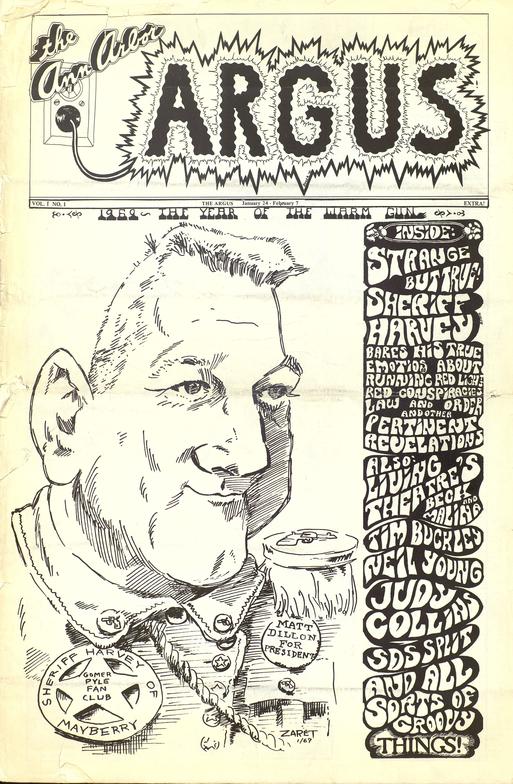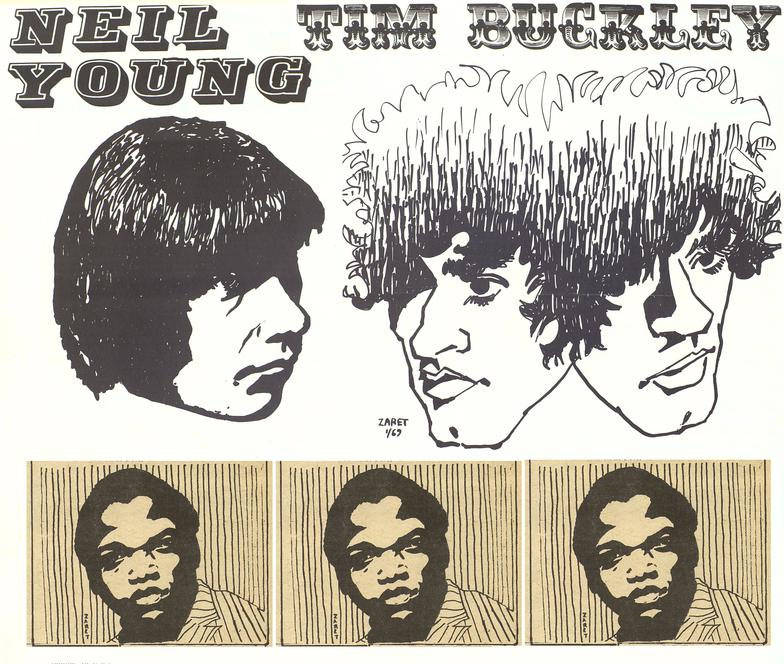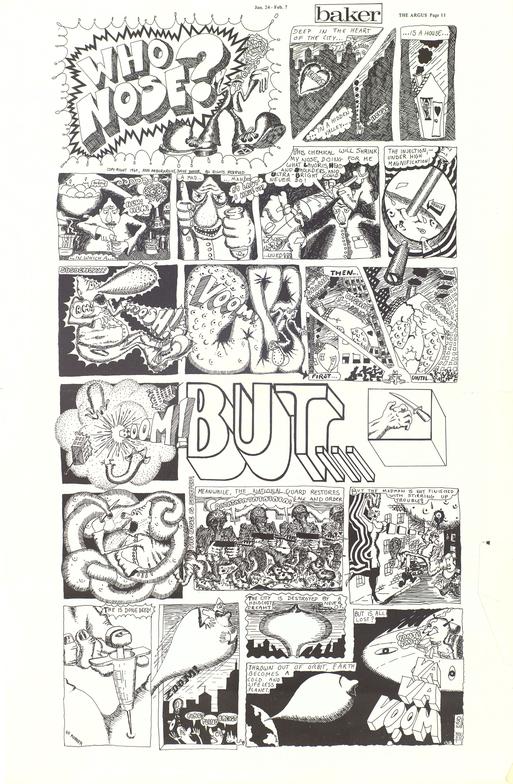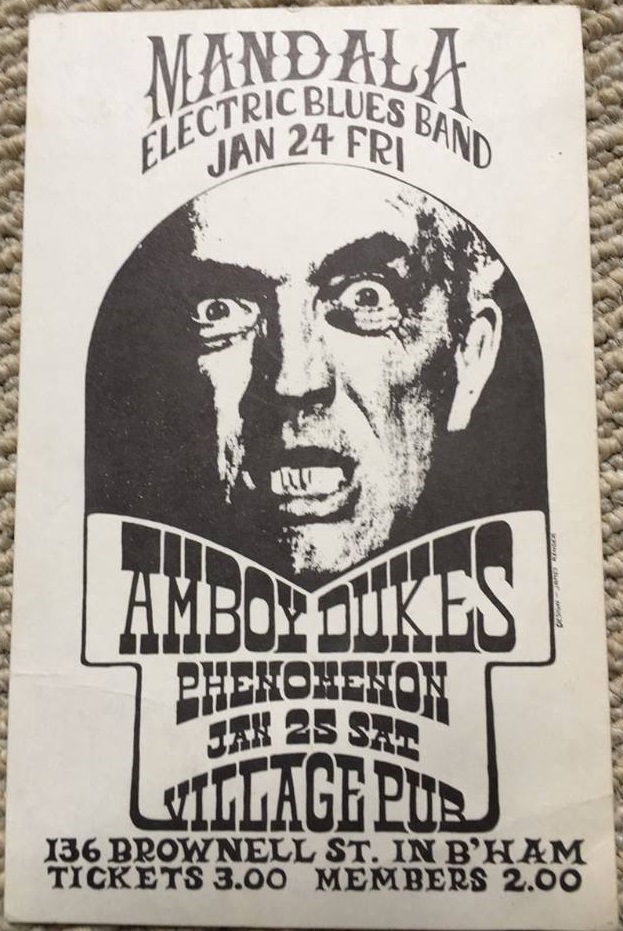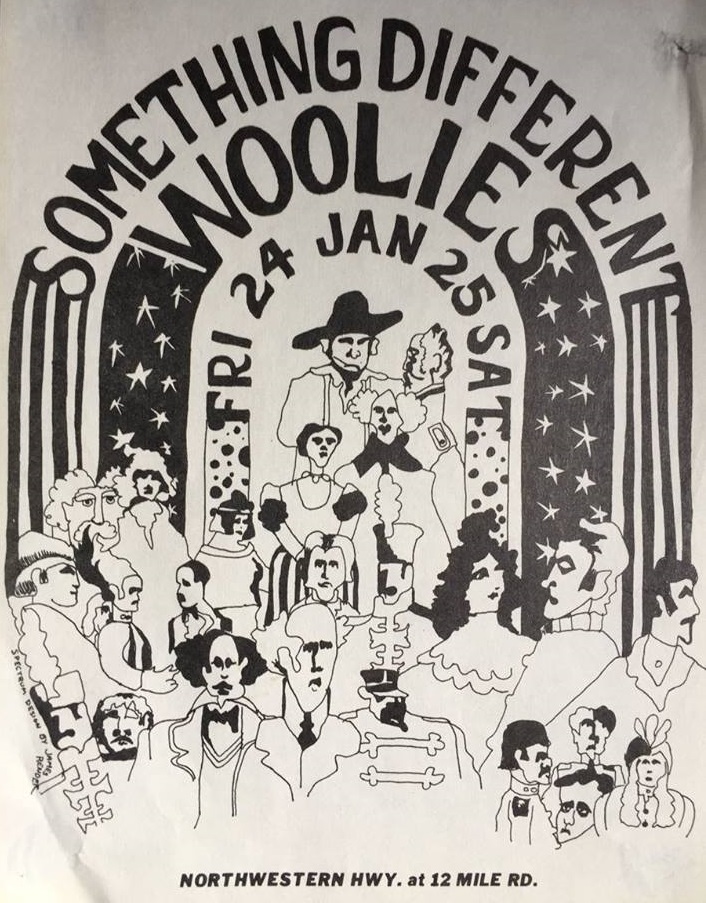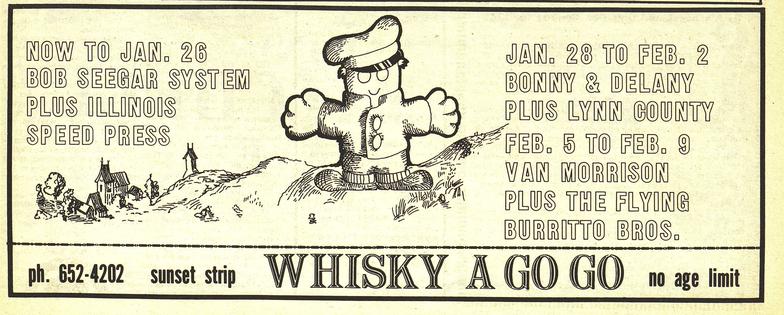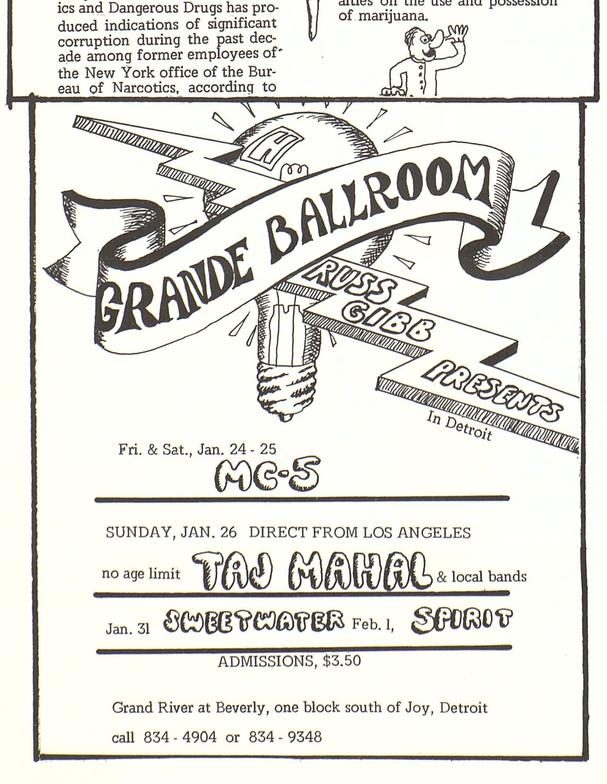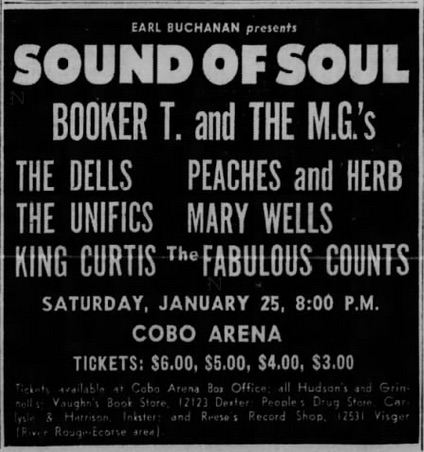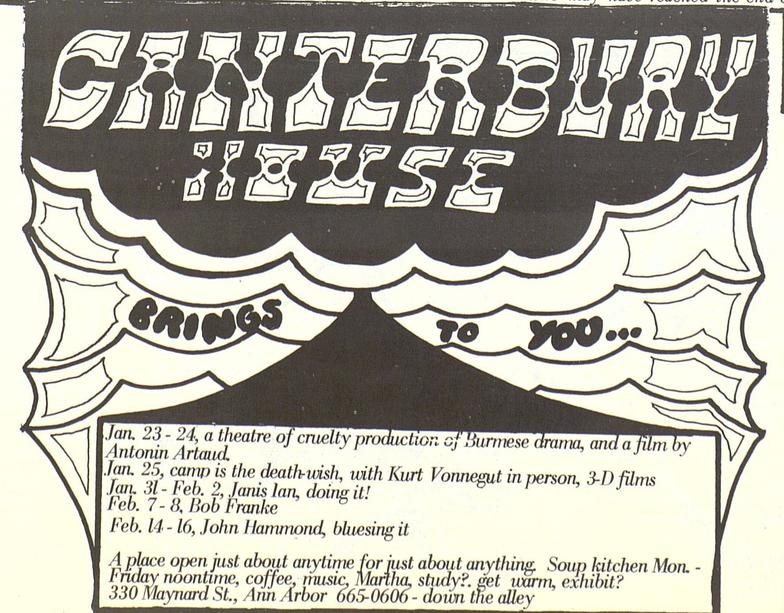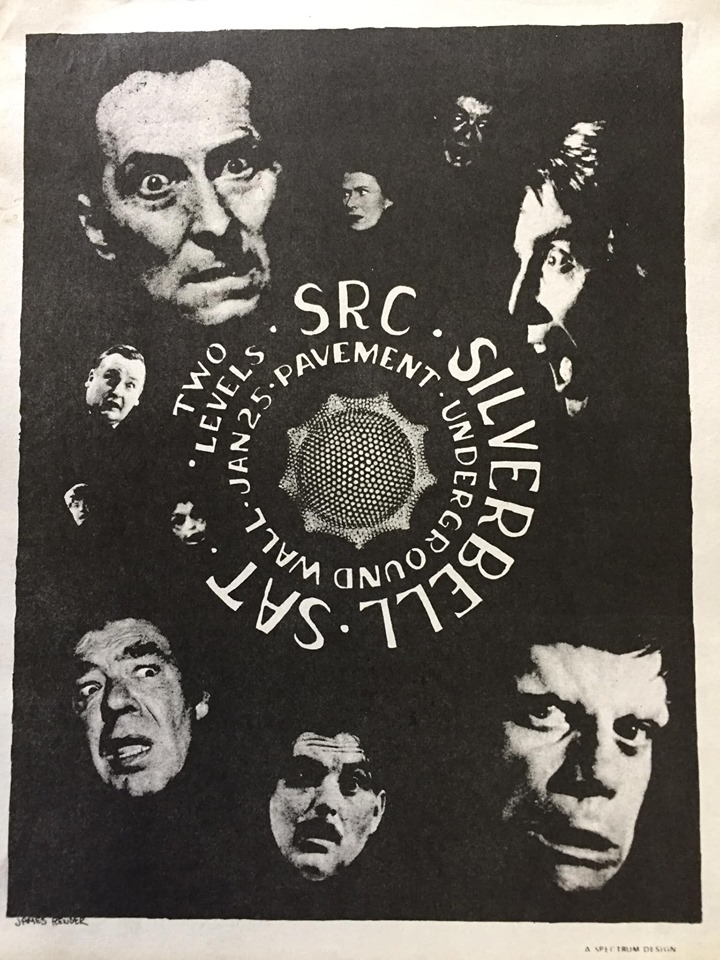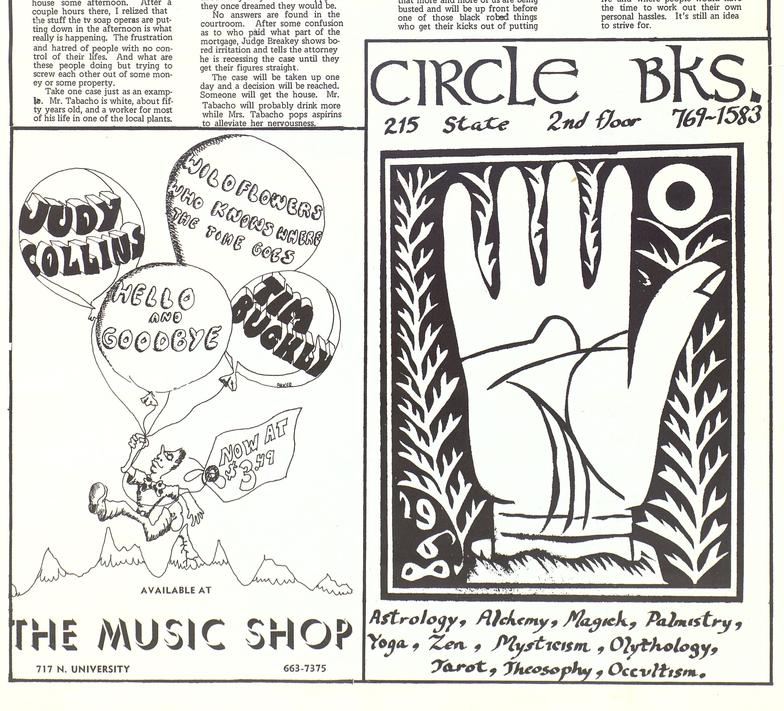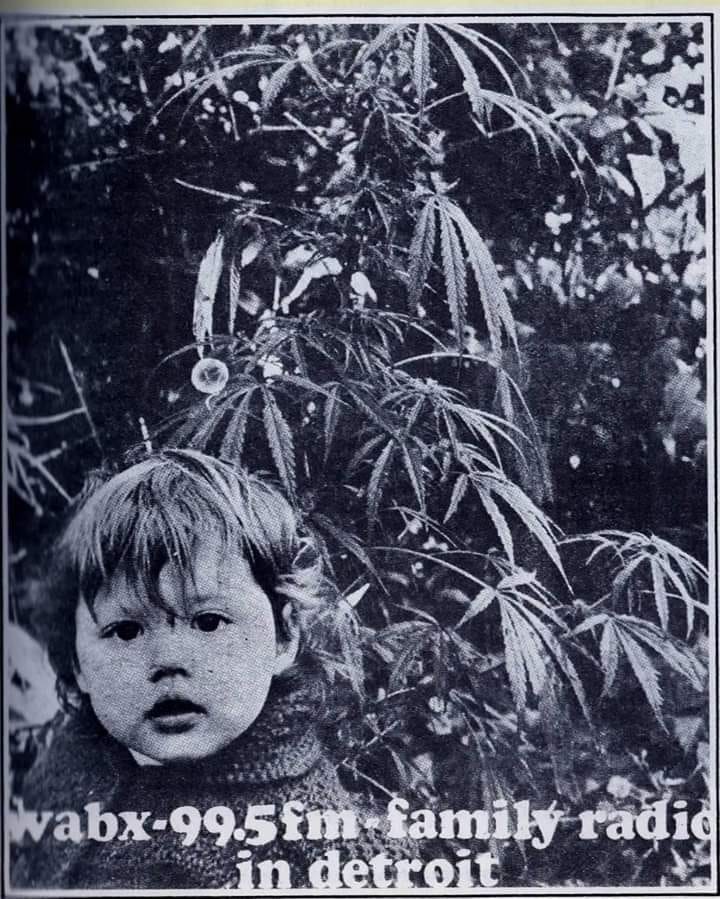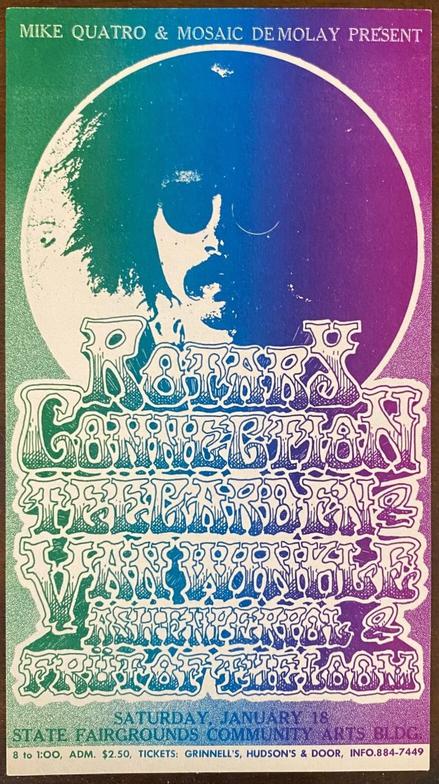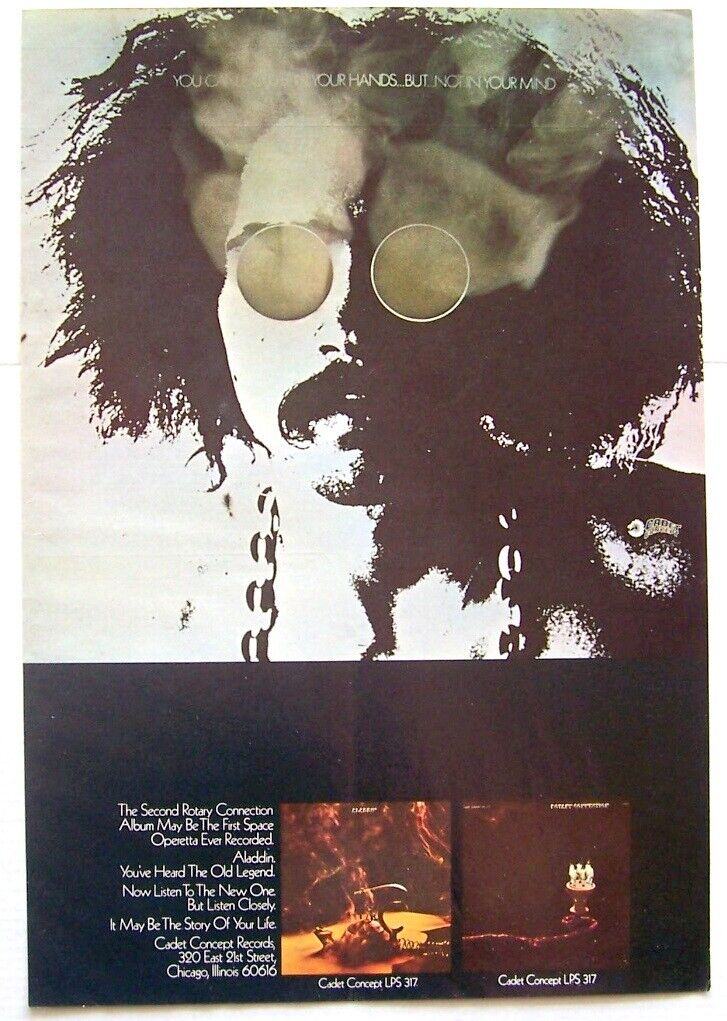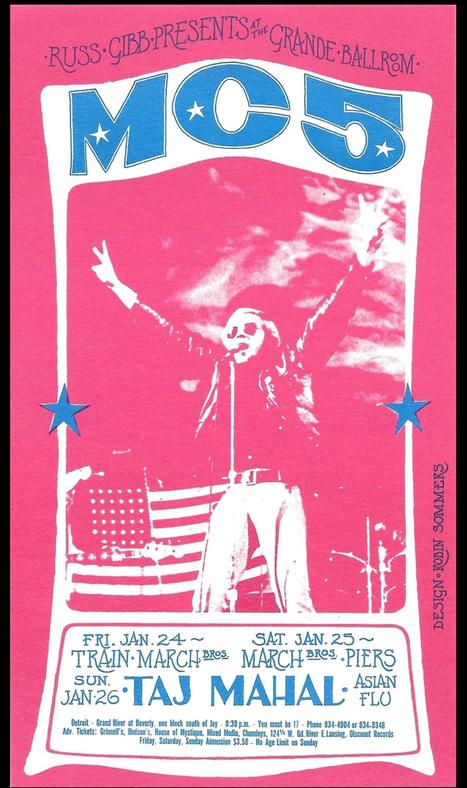Splatt Gallery
Double click here to add text.
Splatt Gallery's History of Michigan Concert Posters
Volume Five - 1969
Well it's 1969 okay
All across the USA
It's another year
For me and you
Another year
With nothing to do
The Stooges – 1969 (James Osterberg / Scott Asheton / David Alexander / Ron Asheton)
*******************************************************
A photo of John and Leni Sinclair’s daughter Sunny on the cover of Issue #2 of the Marijuana Review magazine, January 1969. Published in Buffalo, New York, it was the first cannabis magazine in the United States. It was edited and produced by Michael Aldrich, Ed Sanders of the Fugs, and the Amorphia cannabis collective of Mill Valley, California. It was funded by sales of Amorphia rolling papers. The print run lasted for eight issues until 1973.
The same photo of Sunny Sinclair, by Leni Sinclair, was used in ads for WABX-FM radio in Detroit, starting in March 1969, with the tag line “family radio in Detroit”.
The first shows of the new year at the Grande Ballroom, January 3-5, 1969, featured a poster by Chad Hines, one of the fellow artists of Donnie Dope from Northville High School. The Amboy Dukes headlined two shows with support by the Pack, UP, and Dick Rabbit. On Sunday night the Stooges headlined with openers Frozen Sun.
The Amboy Dukes were arguably Michigan’s most successful rock group at this point, having released two albums on the Mainstream label, and touring extensively around the country, opening for the likes of Vanilla Fudge, Blue Cheer, Iron Butterfly, and the Grateful Dead.
And yet, Ted Nugent continued to shuffle the band’s line-up, replacing vocalist John Drake with Rusty Day from Rusty Day & the Midnighters, a band that had been performing around Detroit since 1964 and had released a single in 1966 on the Maltese label, a subsidiary of Ed Wingate’s Golden World.
Rusty Day & the Midnighters – I Gotta Move (1966)
https://www.youtube.com/watch?v=p4j9T-kWKvA
On New Year’s Day, January 1, 1969, the Sunliners started a residency at Grandmother’s in East Lansing, Michigan that lasted through every night in January and beyond, for well over 50 shows during this final year before the band became Rare Earth. In 1968, they had similarly commandeered the stage at The Dells in nearby Haslett, Michigan for nearly the entire year and they finished as the Sunliners with a run of shows at The Dells in July, 1969, before returning to Grandmother’s one last time, for a thank-you free show for their loyal Lansing fan base. They also performed some shows as the Sunliners at Grandmother’s in October.
This B-side to their “Land of Nod” single, posted earlier, is notable for the guitar work, and co-authorship, of the latest addition to the Funk Brothers, Dennis Coffey.
The Sunliners – Well One (1967)
https://www.youtube.com/watch?v=xYkG5jo5eS0
Meanwhile, out in Los Angeles, Alice Cooper started out the year with a run of shows at the Whisky A-Go-Go, they were paired with Led Zeppelin for four shows, January 2-5, 1969, Led Zepplin were in the middle of their first US tour, they would make their Detroit debut in a couple weeks, January 17-19 at the Grande Ballroom.
Due to the publication schedule of the Los Angeles Free Press newspaper, we do not have an ad that shows that Alice stayed on at the Whisky after the Led Zeppelin shows, remaining for three more shows with the Buddy Miles Express, January 6-8. At the time, the Buddy Miles Express included ex-Detroit Wheels guitarist Jim McCarty.
About six weeks later, Alice Cooper was back at the Whisky again, this time opening for Linda Ronstadt for five nights, February 19-23.
Poster by James Render for the first Michigan appearances by the duo Brewer & Shipley, at the Something Different club in Southfield, Michigan, January 3-5, 1969, with SRC opening on the first two nights.
This poster marks the start of a short run of posters by Render to be primarily hand-drawn, rather than photo-montage.
It will be a couple more years before Brewer & Shipley return to Michigan, by which time they will have released their most famous song, but there will never be a better poster for them, so we’ll include it here:
Brewer & Shipley – One Toke Over the Line (1970)
https://www.youtube.com/watch?v=MNKL9onYB_8
Illustration, possibly by Terry Sharbach, for the Sunliners at Grandmother’s in East Lansing, Michigan, for their twenty-eight show run over the entire month of January 1969. Some online sources claim the band changed their name to Rare Earth in 1968, and their debut album on Verve was released as Rare Earth in 1968, but we find them continuing to perform as the Sunliners at least until October 1969, nearly all of those shows at Grandmother’s, and the final gigs nearby at The Dells.
The Sunliners – All Alone (1965)
https://www.youtube.com/watch?v=R4vcoqX_3RI
Poster by James Render, for the Silverbell Hideout in Auburn Hills, Michigan. The poster only specifies the date for the Spencer Davis Group as “tomorrow night”, but as we cannot confirm that the group performed in the USA in January 1969, we believe this show was cancelled. The poster also shows the Rationals with the Wilson Mower Pursuit and Tea on January 4, 1969 in a show that we can confirm.
This poster is the second, in a row, of Renders that is primarily hand-drawn instead of his typical collage work.
For its first issue of the new year, and its 25th issue in publication, Rolling Stone magazine featured MC5 lead singer Rob Tyner on the cover, dated January 4, 1969. It was the magazine’s first cover appearance of a Michigan artist, and it would take well over two years until the next one.
Rolling Stone magazine came up with an interesting, if not flat out horrible, logo for the feature story on the MC5 in the January 4, 1969 issue.
A full-page Capitol Records ad in the January 4, 1969 issue of Billboard magazine which includes the debut album by the Bob Seger System, along with albums by Gandalf, Hedge & Donna and The Stained Glass. The original title of the Seger album was “Tales of Lucy Blue” but was changed to “Ramblin’ Gamblin’ Man” according to the short liner notes on the back cover.
The front and back cover of the debut album by the Bob Seger System, the back has a note “explaining” the change of the album’s title and the front is a nice depiction for “Lucy Blue”. It reads:
"The title of this album up until three days ago was "Tales of Lucy Blue". At that time, I realized that Lucy Blue is Ramblin' Gamblin' Man. Thank you Doctor Fine!"
A full-page Dot Records ad in the January 4, 1969 issue of Cash Box magazine for what might be one the rarest Mitch Ryder singles, or at least we cannot find it on YouTube.
On January 5, 1969, the Supremes debuted their new single on the Ed Sullivan show, as seen in the video below. The sequel to the Supremes' number-one hit, "Love Child," the song peaked in the top ten on the US Billboard Hot 100 pop chart at #10.
The Supremes – I’m Livin’ in Shame (1969)
https://www.youtube.com/watch?v=-fEYACTP5xE
The earliest reference to Morey’s Cocktail Lounge dates back to 1948. It also claims to be the first “twist bar” in Detroit, hosting Chubby Checker in December 1962. A 1961 ad in The Detroit Free Press called it the “West Side’s gayest night club” and with entertainers such as Blvd. Blanche, Trisha Trash, and Gina Underthebridgida, it probably was. But for one night only, January 6, 1969, Robin Seymour was there with George Clinton.
The Parliaments – Good Old Music (1968)
https://www.youtube.com/watch?v=CGKYXsPlbjs
Newspaper ad for Mitch Ryder at Central Michigan University in Mount Pleasant, Michigan on January 9, 1969.
An ad by promoters Southwest Concerts, Inc boasting about the record gross receipts from five performances by Diana Ross & the Supremes in Houston, Dallas, and San Antonio, Texas, January 9-11, 1969.
Gary Grimshaw illustration for Bob Rudnik’s and Dennis Frawley’s Kokaine Karma column in the January 10, 1969 issue of The East Village Other newspaper in New York City.
An ad for the Charging Rhinoceros of Soul at the Depot House in Ann Arbor, Michigan on January 10, 1969.
The rarest of all the Grande Ballroom posters is by an unknown artist for three nights by Terry Reid, January 10-12, 1969, which were cancelled. Terry Reid himself remained one of Rock’s great unknowns, he passed the invitation to join Jimmy Page’s new band over to his friend Robert Plant, he also turned down an invitation to join Deep Purple, but three tracks from his 1976 album, “Seed of Memory” were used in Rob Zombie’s “Devil’s Rejects” movie.
This clip of Terry Reid performing a rather loose interpretation of Bob Dylan’s “Highway 61” is from a 1970 episode of the Detroit Tubeworks TV show, a precursor to cable TV that was started near the end of 1969 by WABX-FM in conjunction with sister radio stations in St. Louis and Los Angeles, and was hosted by Fifth Estate founder Harvey Ovshinsky, WABX disc jockeys Dave Dixon, Dan Carlyle, Jerry Lubin and Bob Rudnick, and occasionally even John Sinclair. The show lasted until 1974 and we’ll be featuring many more clips from this ground-breaking show.
Terry Reid – Highway 61 (1970)
https://www.youtube.com/watch?v=Eu5NjVvs-lk
A newspaper ad, in the absence of any posters for these shows, for the 119th weekend at the Grande Ballroom, with a band named Genesis (not the British band), with support by Third Power, and Caste, January 10-11, 1969, with by the James Gang on the 12th.
The following weekend, January 17-19, was the Detroit debut of Jimmy Page’s new band with one of its many varieties of misspellings. Led Zeppelin headlined three nights, with support by Linn County all three nights, Lawrence Blues Band, Target, and Wind. Despite drawing only 35 people to their first Grande Ballroom show, Led Zeppelin would return two more times in 1969.
Led Zeppelin – Good Times Bad Times (1969)
https://www.youtube.com/watch?v=lsZG7n7ries
Another example, one of the more egregious, of the variety of misspellings of the name of Jimmy Page’s new band during their first tour. Promoters just couldn’t seem to get the hang of it, Grande Ballroom MC Dave Miller’s announcement of the upcoming show, “Next week we have Led, Lud, Led Zeet? Well, I’m not really sure, but it is the new band for Jimmy Page”, a less than enticing message that may account for why hardly anyone showed up the following week.
The concert being advertised for “Len Zefflin”, at the Kennedy Pavilion on the campus of Gonzaga in Spokane, Washington, December 30, 1968, two weeks before their Detroit appearance, is noteworthy as a bootleg tape of the show is the earliest recording of the band. Sound quality is not great, but the performance is there and shows why, after the tour, everybody knew their name.
Led Zeppelin – Live in Spokane – 12/30/68
https://www.youtube.com/watch?v=wBtLHbD6ciI
A very fine poster for John Lee Hooker as he started the year off by hitting the road, with this show in Providence, Rhode Island on January 11, 1969.
An ad in the January 11, 1969 issue of Billboard magazine for Leisure Light & Sound/The Visual Thing, a distributor of posters in New York City.
A poster for Eddie Floyd in Charlotte, North Carolina, January 11, 1969. Since leaving the Falcons, the group Floyd had founded in Detroit, he signed on with Stax Records in Memphis, Tennessee as a songwriter, teaming up with Stax guitarist Steve Cropper to write songs for fellow ex-member of the Falcons, Wilson Pickett. In late 1966, Floyd recorded the song “Knock on Wood”, a song he had originally written for Otis Redding.
Eddie Floyd – Knock on Wood (1966)
https://www.youtube.com/watch?v=92NpzXXpQtg
On January 17, 1969, The MC5 appeared at the Village Pub in Birmingham, Michigan. This show was filmed by Leni Sinclair and used in a montage promo film called “Kick Out the Jams” that would be used as a stage intro in later tours. Poster by James Render.
The MC5 – Come Together (1968)
https://www.youtube.com/watch?v=2IBcey6i_X4
The first of a series of “Freakouts” on the Michigan State University campus in East Lansing, Michigan, kicking off with SRC and the Maxx on January 17, 1969.
Poster by James Render, for Mandala and the Shaggs at the Clawson Hideout in Clawson, Michigan, January 17, 1969. There is an error on the poster as the 17th was on a Friday instead of Saturday. The concert database has Mandala at the Clawson Hideout on 01/17/69, and then at the Something Different club in Southfield on 01/18/69, which makes the error on the poster more likely to be the wrong day rather than the wrong date.
Something different from poster artist James Render for his poster for the Something Different club in Southfield, Michigan, with Wilson Mower Pursuit and Madrigal on January 17, 1969, and Mandala with Candy Store Syndicate on January 18-19.
This rather unusual poster is Render’s third that is hand-drawn instead of photo-montage.
A full-page Atlantic Records ad for the single “Tracks of My Tears” by Aretha Franklin, from her album “Soul 69” which was released on January 17, 1969. The single sold better when the sides were reversed with the B-side “The Weight” that peaked at #3 on the Billboard R&B Singles chart.
The album “Soul 69” was her fifth for Atlantic, all five, in a row, reached #1 on the R&B Albums chart.
Possibly a miracle, as we are having a hard time confirming that the Motown group actually appeared at this show, but their name is prominent on this poster by Tad Hunter, who signed his work as “San Andreas Fault”.
A “Family Dog Revival” show to help out the collective, who had lost their lease, and/or their sound permit, at the Avalon Ballroom in San Francisco, California at the end of 1968, and needed a new venue to continue their shows (eventually they would locate at an old amusement park on Ocean Beach, calling it the “Family Dog on the Great Highway at the edge of the Western World” in June 1969).
The revival show was held at the Winterland Ballroom in San Francisco on January 17-18, 1969, headlined by The Mothers of Invention.
Postcard by Carl Lundgren for a January 18, 1969 show at the Michigan State Fairgrounds, headlined by the Chicago band, Rotary Connection, in their first of a dozen appearances around Detroit in 1969.
The two images show the variation of the color bleed. Also shown is the record company ad for the second album by Rotary Connection with the central image that Lundgren used for his poster.
Co-headliners, Teegarden & Van Winkle were the drummer/organist duo of David Teegarden and Skip Knape who had moved to Detroit from Tulsa, Oklahoma in the summer of 1968, becoming instant darlings of the Detroit music scene.
They opened the first WABX free concert in River Rouge Park, and recorded a live album at The Red Carpet Lounge on Warren Avenue in Detroit in late 1968 that the radio station promoted heavily, #1 on their album chart for 13 weeks. The title of the LP, “an evening at home with Teegarden & Van Winkle” shows how quick they were to adopt their new home in the Motor City (arming themselves with a rifle on the album cover photo) and was released on Plumm Records before being picked up and re-issued on Atco.
Teegarden & Van Winkle – an evening at home with Teegarden & Van Winkle (album) (1968)
https://www.youtube.com/watch?v=fMCzTloeJJ8
Poster by James Render, for Frost, Third Power, and Ruins at the Silverbell Hideout in Auburn Hills, Michigan, January 18, 1969.
Newspaper ad for the Sound Lounge in Mount Pleasant, Michigan with the second Michigan appearance by The American Breed on January 18, 1969. The Chicago-based band had performed two weeks earlier at the Crow's Nest East in St. Clair Shores on January 4th and would have one more Michigan show, at the Crow's Nest West in Westland on April 5, 1969.
The American Breed – Bend Me, Shape Me (1968)
https://www.youtube.com/watch?v=f3mUO268OkY
A poster for Diana Ross & the Supremes at the Convocation Center at Ohio University in Athens, Ohio on January 18, 1969.
An ad for Diana Ross & the Supremes at the University of Dayton in Dayton, Ohio on January 19, 1969.
The January 20, 1969 issue of the SUN, still again little more than a mimeographed ten-page broadsheet, harkened back to its earlier art-filled origins with a cover by Gary Grimshaw, “Minister of Art in exile – much love to our exiled brother wherever he may be”.
A full-page Motown Records ad for David Ruffin’s solo debut single “My Whole World Ended (The Moment You Left Me)”, released on January 20, 1969. Ruffin’s departure from the lead singer role in the Temptations had been protracted. By 1967, three years since “My Girl” and all the mega-hits that followed, tensions between Ruffin and the rest of the group started to surface, exemplified by things like his refusal to travel with group, preferring to ride in his limo, with his trademark spectacles painted on the door, accompanied by his girlfriend Tammi Terrell. After Berry Gordy changed the name of the Supremes to Diana Ross & the Supremes, Ruffin wanted to change the name of the Temptations to David Ruffin & the Temptations.
The breaking point came in June 1968, when Ruffin missed a gig in order to attend a performance by his new girlfriend, Dean Martin’s daughter. He was fired and replaced by Dennis Edwards from the Contours. Ruffin started showing up at the Temptations’ shows, and when they would get to “My Girl” or “Ain’t Too Proud to Beg”, he’d come on-stage, take the microphone from Edwards and steal the show, much to the audience’s delight. He even convinced the group to take him back, but when he was late for his big return show, he was canned for good.
In spite of the common contract disputes with the company, Motown treated him well, still assigning him with the best writers and producers, Ruffin had always been contracted as a solo artist, (another source of conflict with the other Temptations), for his first solo single, they gave him a song that was intended to be the next Temptations’ single.
David Ruffin - My Whole World Ended (The Moment You Left Me) (1969)
https://www.youtube.com/watch?v=LpUxgahyViI
Nineteen year-old, University of Michigan student, Ken Kelley moved into the Trans-Love commune on Hill Street in Ann Arbor and started publishing The Ann Arbor Argus from the basement of the Canterbury House club, with the first issue dated January 24, 1969. From the little we can find on this hard-to-find publication, it appears to have an art content equal or better to The Sun and The Fifth Estate. There is an online library source that is set to release the contents of The Argus in January 2019, while we’ll probably still be in the middle of this thing! Artist for the cover of the first issue is Phil Zaret.
Portraits by artist Phil Zaret, who drew the cover of the first issue of the Ann Arbor Argus.
Dave Baker’s Gross-Out Comix from the January 24, 1969 issue of the Ann Arbor Argus newspaper.
Poster by James Render, for Mandala and the Electric Blues Band on January 24, 1969, and with the Amboy Dukes and Phenomenon the following night at the Village Pub in Birmingham, Michigan.
Poster by James Render, with the Woolies at the Something Different club in Southfield, Michigan, January 24-25, 1969. It is his fourth, and final, poster to be hand-drawn rather than photo-montage.
The 121st weekend at the Grande Ballroom, January 24-26, 1969, featured another poster by Robin Sommers with a classic Leni Sinclair photo of MC and Zenta high priest, J.C. Crawford. This image was originally printed only as a postcard.
This was the first Detroit appearance by Taj Mahal and the last known appearance of the band named Asian Flu (seen earlier opening for Bob Seger at the Silverbell Hideout in November, 1968.
The MC5 – Rocket Reducer No. 62 (Rama Lama Fa Fa Fa) (1968)
https://www.youtube.com/watch?v=Ll5kKCzHii0
An ad for the Bob Seger (mis-spelled) System at the Whisky A-Go-Go in Hollywood, California, January 24-26, 1969. We know there is a conflict with the 26th, since it is well-documented that the band performed at Michigan State University in East Lansing, Michigan on that date, twin-billed with Neil Diamond (a newspaper review gave Diamond the nod on that show, with the headline “Diamond outshines Seger”).
So, they either cut the Whiskey gig short, as some sources put Seger there January 24-25, to resolve the conflict, or, perhaps more likely, the whole trip to California was cancelled for some reason.
A newspaper ad for the January 24 through February 1, 1969 run of shows at the Grande Ballroom featured a cool, new “lightning bulb” logo, by Ann Arbor Argus cartoonist Dave Baker, that would get repeat usage throughout the year.
It lists the January 24-26, 1969 shows by MC5 and Taj Mahal along with a show by Sweetwater at the Grande Ballroom on January 31, 1969, and a show the next day by Spirit and Sweetwater.
An ad for the Sound of Soul concert at Cobo Arena in Detroit, Michigan, January 25, 1969. It documents the apparently final Michigan show for the legendary King Curtis, and gives us a reason to include this incredibly great track. Check it out.
King Curtis – Whole Lotta Love (1970)
https://www.youtube.com/watch?v=xA5PNWPNVa4
The Canterbury House in Ann Arbor, Michigan continued to prove that it was the place “for just about anything” when they presented author Kurt Vonnegut on January 25, 1969. Vonnegut had just published his sixth novel, Slaughterhouse-Five, which proved to be his commercial breakthrough, validating the critical successes of his earlier works and putting him on the in-demand speaker tour circuit. The nice ad layout is by an unknown artist.
Poster by James Render, for SRC with Pavement and the Underground Wall at the Silverbell in Auburn Hills, Michigan, January 25, 1969.
Volume Five - 1969 - continues - HERE
Illustration for the Music Shop ad by Dave Baker and an illustration by Prime Mover’s Michael Erlewine for the Circle Books store in the January 24, 1969 issue the Ann Arbor Argus newspaper.


